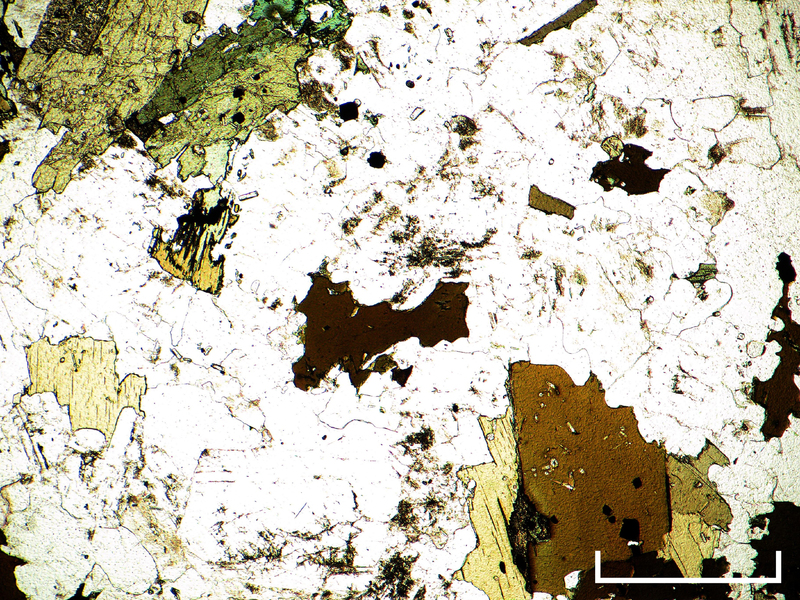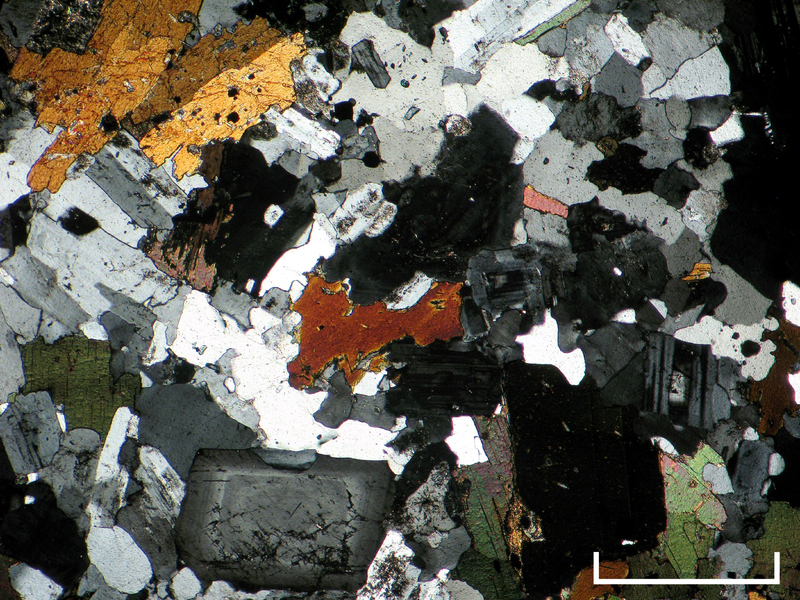- Home
- Rocks
- Type fossils
- Fossil Specimens
- Minerals
- Glossary
- Stratigraphic Chart
- Michel-Levy Chart
- Classification of igneous rocks
- University of Cambridge
- Department of Earth Sciences
- ESC Library
- Moodle
- Sedgwick Museum
- DoITPoMS
- Mindat.org
- Microfossils
- Bryozoans
- Webmineral
- Tree of Life
- CrystalMaker
- Virtual Microscope
L120 Granodiorite
Title
L120
Granodiorite
Subject
Age
Caledonian, Devonian
Location
Boulder, Moor of Rannoch
Description
Hand Specimen
Mostly moderately coarse-grained (typically 1-2 mm), some regions finer-grained (typically ~0.5 mm).
“Salt and pepper” appearance being speckled black and white. Two black phases, biotite mica and hornblende amphibole. White regions comprise quartz and white feldspar.
“Salt and pepper” appearance being speckled black and white. Two black phases, biotite mica and hornblende amphibole. White regions comprise quartz and white feldspar.
Thin-section
Hornblende amphibole
- Pleochroic in greens and cream. Some of the grains display simple twinning. Two cleavages intersect at 56°.
Biotite
- Subhedral to anhedral grains, pleochroic in brown and straw. Straight, speckled extinction. Chlorite partially replaces biotite – late stage alteration.
Quartz
- Anhedral, interstitial grains. They display undulose extinction and contain abundant tiny inclusions, but are characteristically fresh and unaltered.
Feldspar, mainly plagioclase
- Mostly anhedral grains, though some are lath-shaped. Alteration. Zonation.
Accessory minerals:
- Sphene
- Magnetite
- Apatite
Rock History
Rock history Hornblende is euhedral. It is, therefore a primary igneous phase, and must have crystallised from a wet melt.
Magma cooled relatively slowly, allowing large crystals to grow.
Rock Name
granodiorite
Citation
“L120
Granodiorite,” 1A Collections, accessed April 9, 2024, https://wserv3.esc.cam.ac.uk/p1acollections/items/show/8.
Granodiorite,” 1A Collections, accessed April 9, 2024, https://wserv3.esc.cam.ac.uk/p1acollections/items/show/8.



